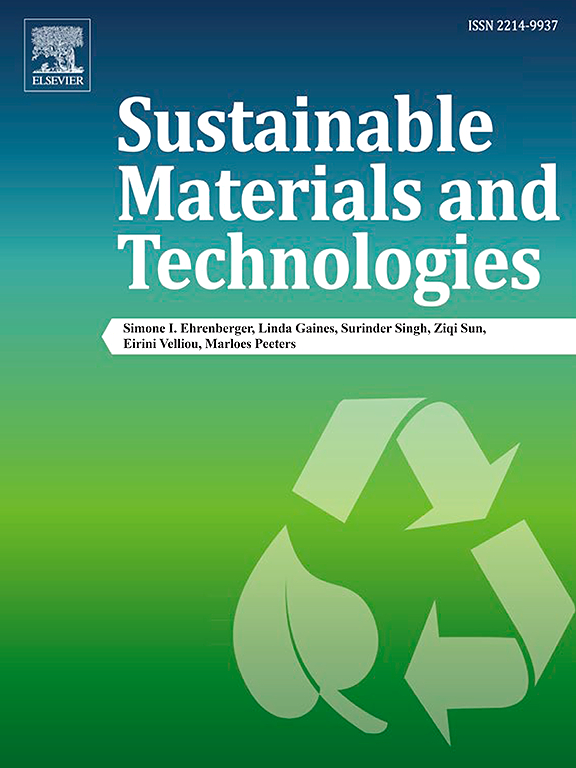Evaluation of phase change material-impregnated waste tire-derived carbon in cement-expanded vermiculite-based composites for solar thermoregulation of buildings
IF 8.6
2区 工程技术
Q1 ENERGY & FUELS
引用次数: 0
Abstract
This study introduces an innovative phase change material (PCM) impregnated waste tire-derived carbon (WTC), based on the dire need for enhanced energy efficiency and building temperature management. Thermal energy storage materials were produced by combining capric acid (CA) and palmitic acid (PA) eutectic mixture (CA-PA) with WTC in cement-expanded vermiculite-based composites (CEVCs). The study comprehensively evaluates the impact of PCM-impregnated WTC on the thermoregulation performance of CEVCs in specially prepared test cabins under real weather conditions. Moreover, the material's physio-mechanical properties, thermal conductivity, thermal stability, and thermal behavior were also investigated, validating its ability to absorb and discharge latent heat. The results revealed that WTC/CA-PA experienced latent heat values of 85.2 J/g and 85.8 J/g during solidification and melting, respectively. Furthermore, it was observed that composites containing 10–40 % PCM-impregnated WTC exhibited 12.7–43.7 % and 25.5–160.8 % higher dry unit weight and compressive strength than the reference specimen. The solar thermoregulation experiments at real weather conditions revealed that CEVC containing PCM-impregnated WTC produced a maximum difference of 5.3 °C and 3.53 °C in temperature between the upper surfaces and near surfaces of the test and reference chambers. The promising results symbolize a significant shift toward fostering sustainable construction practices, encompassing occupant comfort and energy efficiency for a sustainable built environment while addressing the critical issue of waste tire recycling.

求助全文
约1分钟内获得全文
求助全文
来源期刊

Sustainable Materials and Technologies
Energy-Renewable Energy, Sustainability and the Environment
CiteScore
13.40
自引率
4.20%
发文量
158
审稿时长
45 days
期刊介绍:
Sustainable Materials and Technologies (SM&T), an international, cross-disciplinary, fully open access journal published by Elsevier, focuses on original full-length research articles and reviews. It covers applied or fundamental science of nano-, micro-, meso-, and macro-scale aspects of materials and technologies for sustainable development. SM&T gives special attention to contributions that bridge the knowledge gap between materials and system designs.
 求助内容:
求助内容: 应助结果提醒方式:
应助结果提醒方式:


